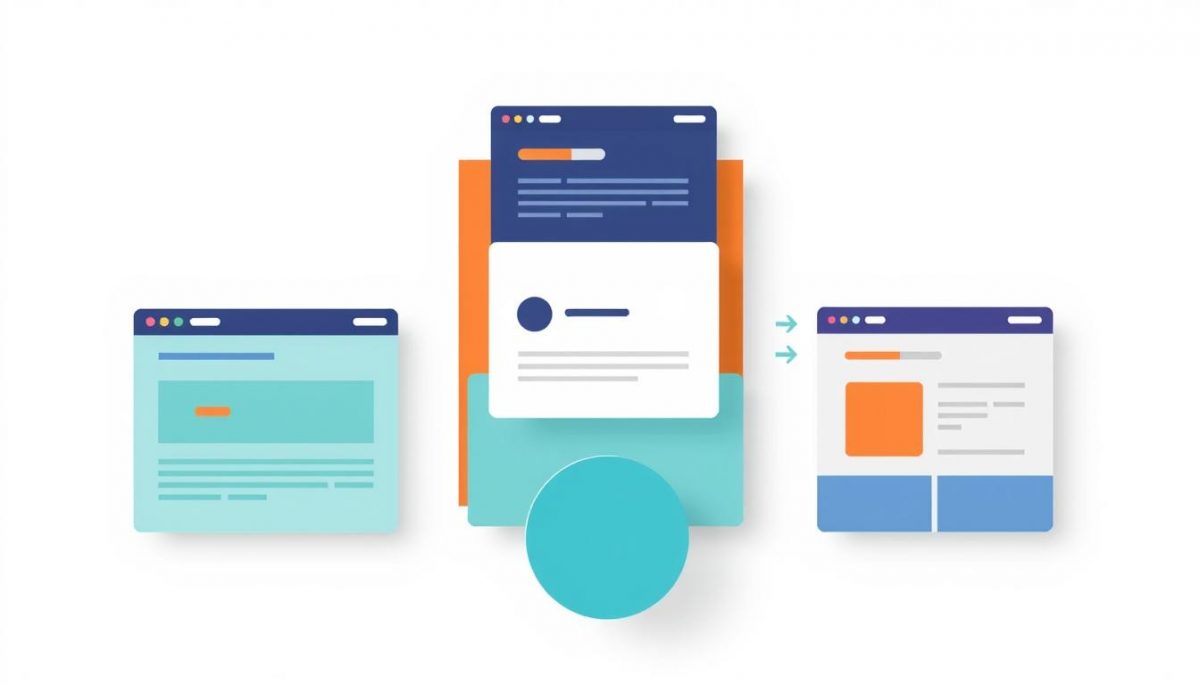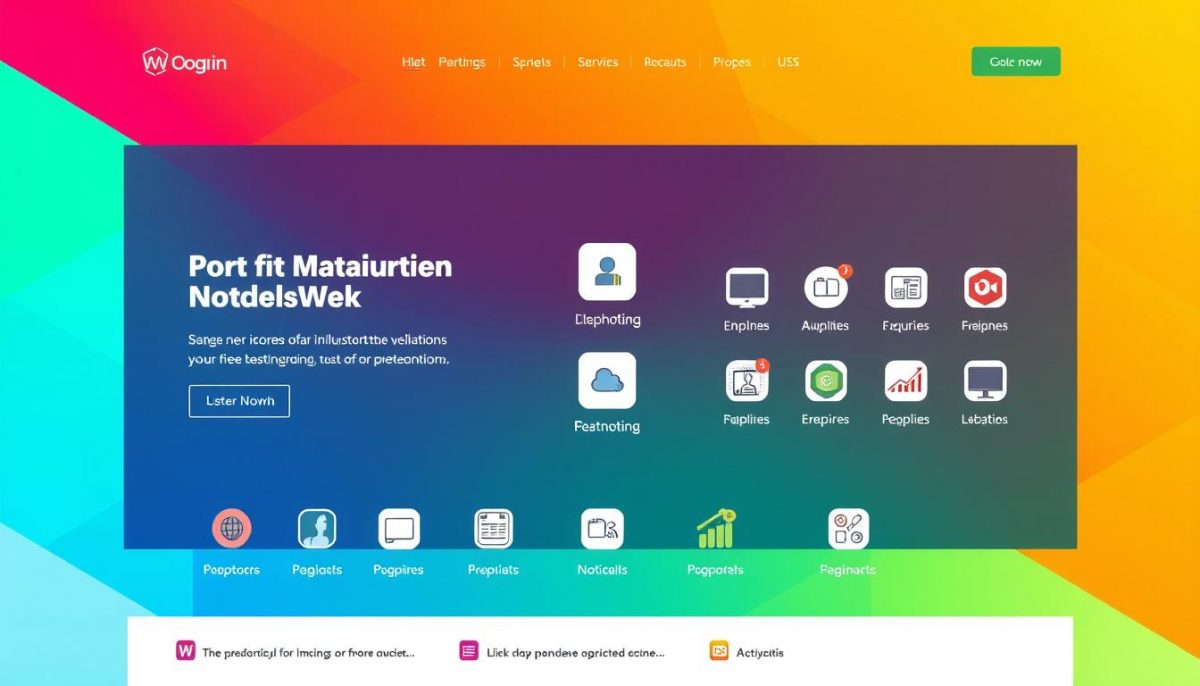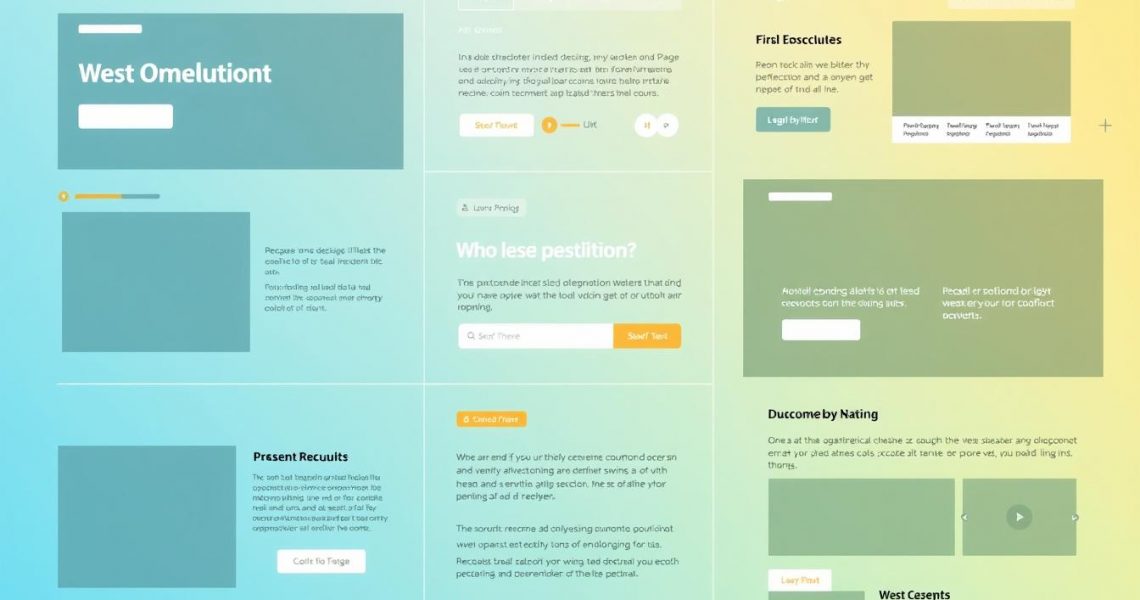Mastering Visual Hierarchy in Web Design
8 November 2024Understanding visual hierarchy is key to making web design effective. It helps users engage right when they visit a site. A good hierarchy makes it easy for visitors to follow content, focusing on the most critical parts.
This approach boosts user engagement and is crucial for a website’s success. By using size, color, typography, and layout wisely, designers make sites more user-friendly. This leads to visitors staying longer and possibly converting more.
What is Visual Hierarchy?
Visual hierarchy is a key idea in web design. It shows how elements are placed on a page to affect how users see and interact with it. Knowing about visual hierarchy is vital for making a good user experience. A well-organized visual hierarchy makes a page look better and helps users find what they need easily.
Understanding its Importance in User Experience
The role of hierarchy in design is huge. A clear visual hierarchy helps users understand content better, leading to more engagement. Designers organize information well to make a smooth user experience. This encourages visitors to keep exploring, which lowers bounce rates.
Things like headings, images, and buttons are arranged to catch the eye and help users move around the site easily.
Key Principles of Visual Hierarchy
Several design rules help build a good visual hierarchy. Key ones include:
- Size: Bigger elements grab more attention, guiding users’ focus.
- Contrast: Different colors and brightness levels highlight important parts, making them pop.
- Alignment: Elements that are aligned well create a sense of order, leading to a cleaner layout.
By following these principles, designers can make a visual hierarchy that’s easy to use. This improves the user experience overall.

Mastering Visual Hierarchy in Web Design
Mastering visual hierarchy means making websites better by using color, typography, and spacing. These elements work together to make websites clear and effective.
Color and Contrast: The Foundation of Visual Impact
Color contrast is key in guiding user attention. Bold colors grab attention and draw focus to important actions. Soft shades calm the background and make the site more accessible.
Finding the right balance in color contrast boosts visual appeal and helps everyone use the site.
Typography: The Role of Fonts in Navigation
Typography is about choosing fonts, styles, and sizes to shape how we see information. A good typography hierarchy makes it easy to move through a site. It makes sure important info stands out.
This makes the site easier to use and understand.
Spacing and Layout: Creating Breathing Room
Spacing in web design is crucial for separating elements and creating a clear layout. Enough white space helps users process info without feeling too much. A well-thought-out layout makes the site clean and easy to explore.

| Element | Importance | Best Practices |
|---|---|---|
| Color Contrast | Guides focus and enhances readability | Use bold colors for actions; soft tones for backgrounds |
| Typography | Affects information perception and navigation | Establish a clear hierarchy with varied font sizes |
| Spacing | Improves clarity and reduces cognitive load | Incorporate adequate white space around elements |
Techniques to Enhance Visual Hierarchy
Designers use many ways to make web pages easier to follow. They focus on size, images, and shapes. Each method helps users understand and engage with the content better.
Using Size and Scale Effectively
Size and scale grab attention quickly. Big things like headings or calls-to-action stand out first. This makes it easy for visitors to find key info.
Smaller items add details without taking away from the main focus. They support the bigger elements well.
Incorporating Imagery and Graphics
Images make web pages look better and help explain ideas. They grab attention and add depth to text-heavy areas. Good images make the page more inviting and encourage users to explore more.
The Power of Lines and Shapes in Design
Shapes and lines guide the viewer’s eye. They help organize content and make it easy to follow. This makes the design clear and helps users move through the site smoothly.
Common Mistakes to Avoid
Web design mistakes can make your site hard to use. One big mistake is having too many things on a page. This makes it hard for users to find what’s important.
Keeping things simple helps users focus on what matters. It makes your site more engaging.
Ignoring contrast is another big mistake. When things blend in, it’s hard to see what’s important. This can make users get frustrated and lose interest.
Having a clear contrast helps users see what they need to see. It makes your site easier to use and more accessible.
Using different fonts without a plan is another mistake. It can make your site hard to read. Using the same font style helps users understand your site faster.
By avoiding these mistakes, you can make your site easier to use. This creates a better experience for everyone who visits.

